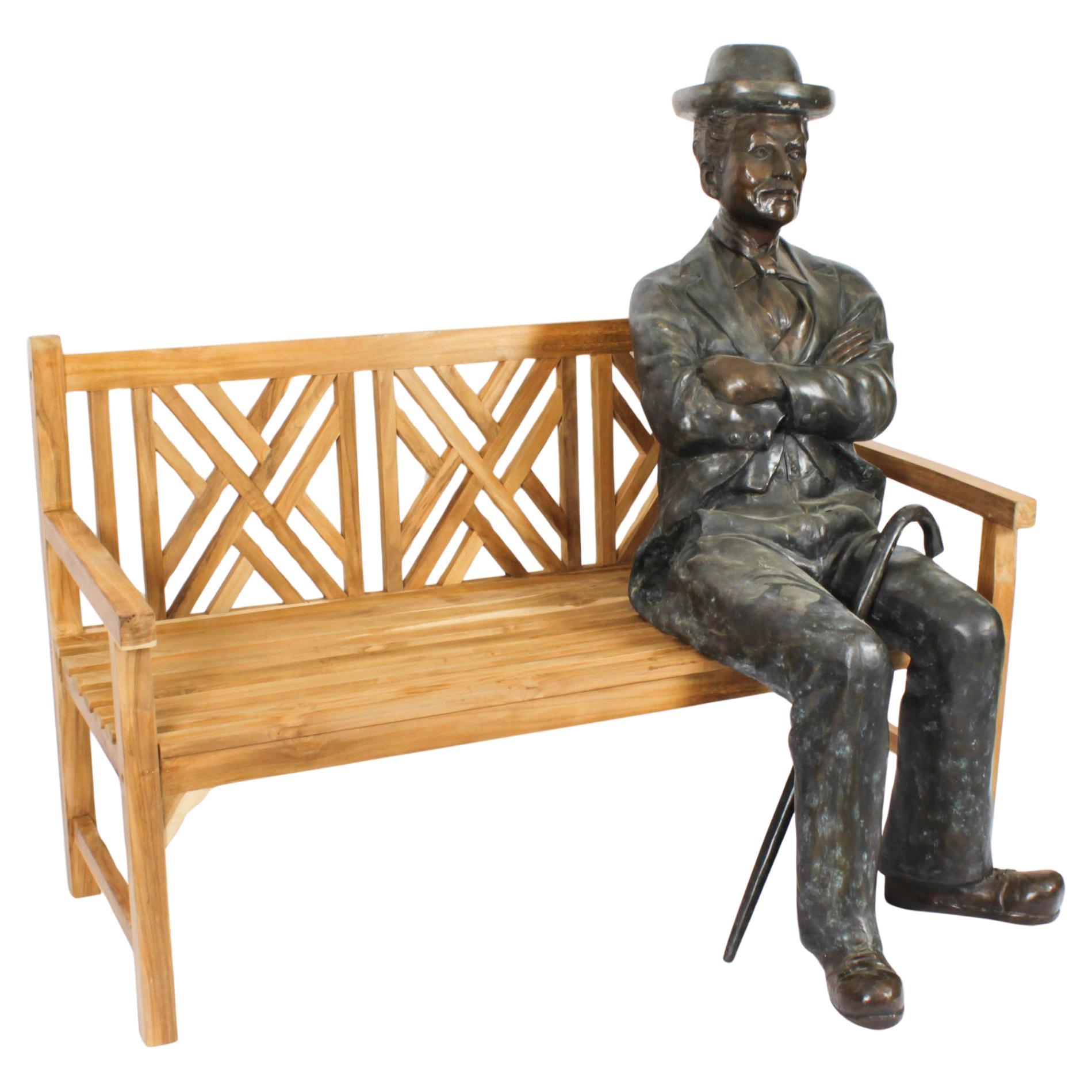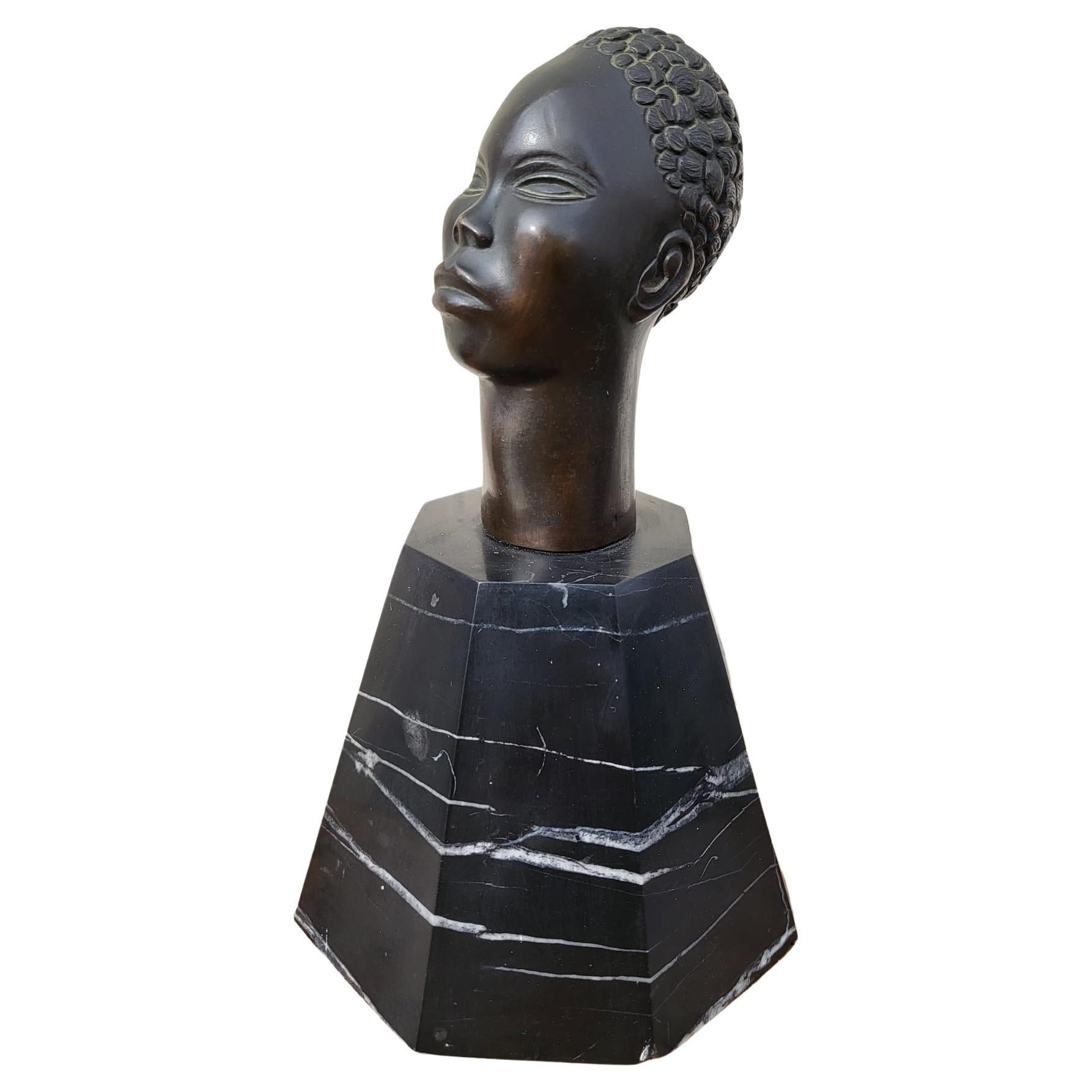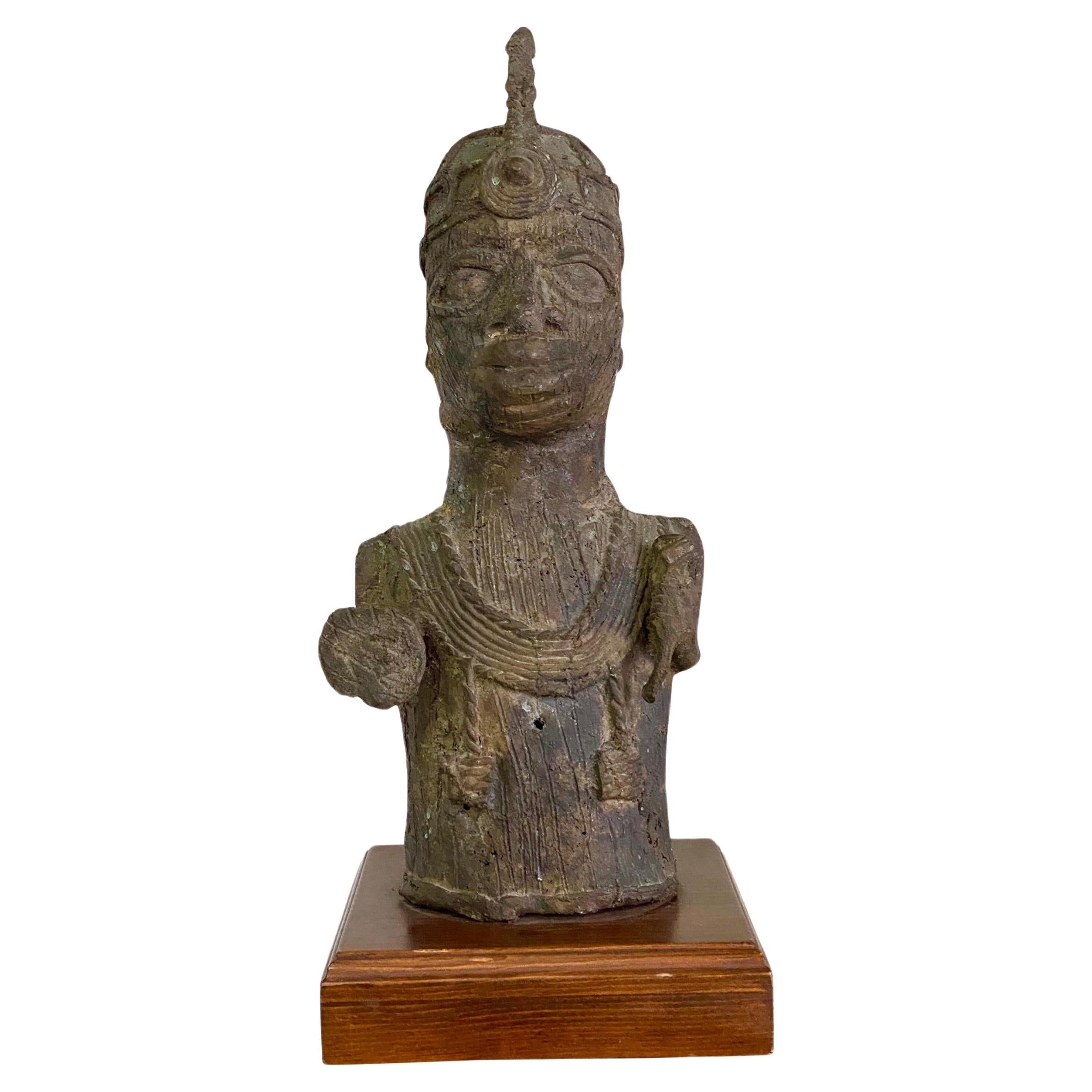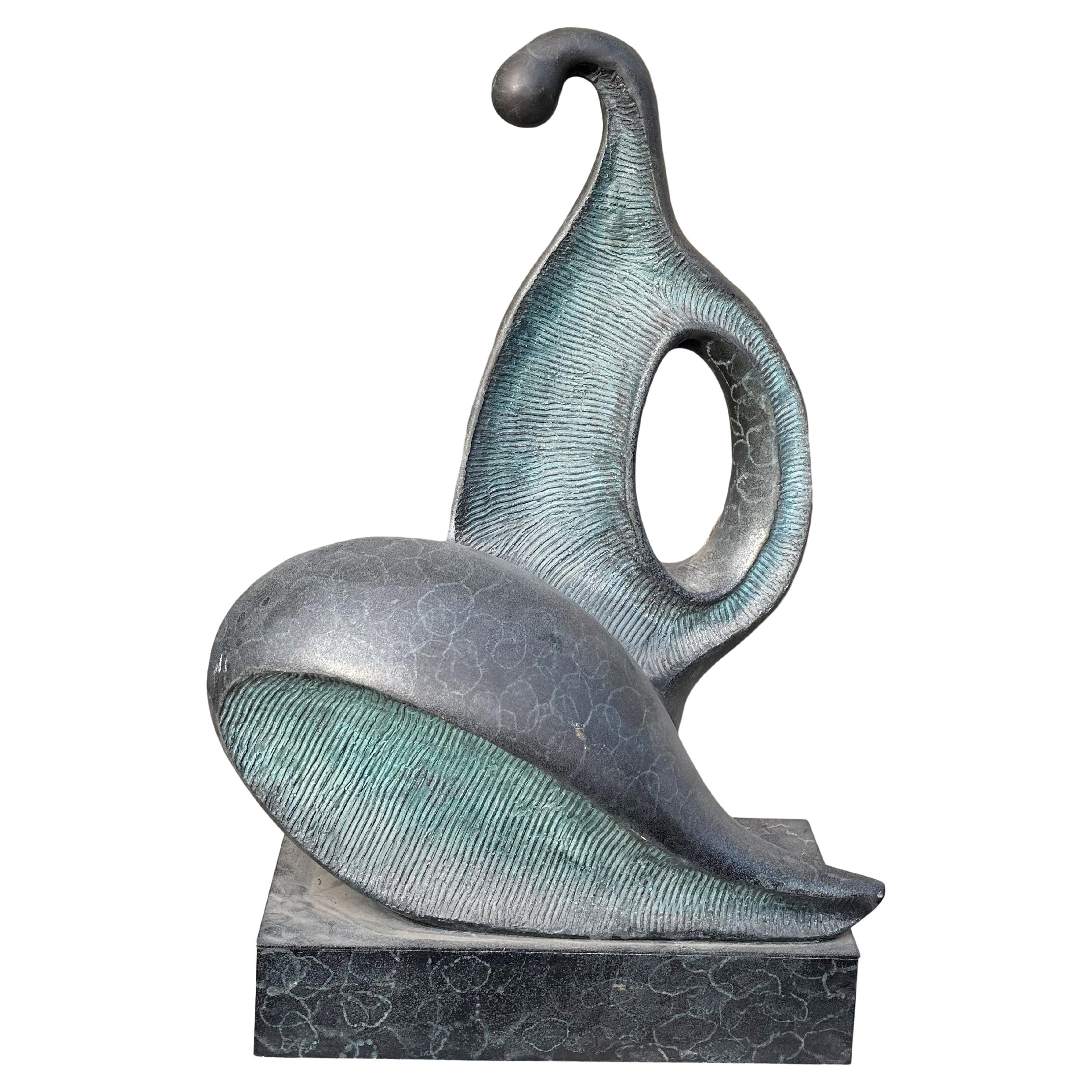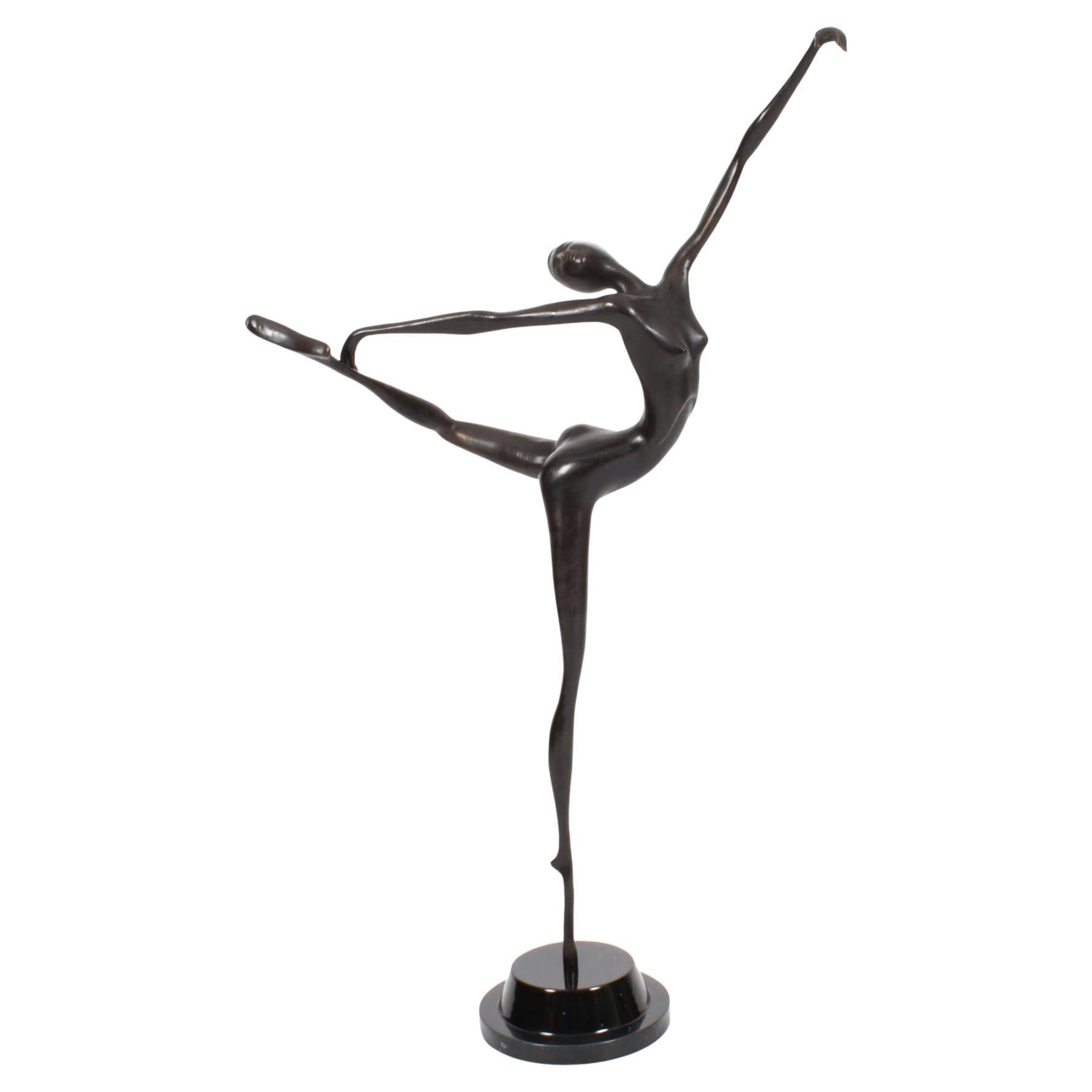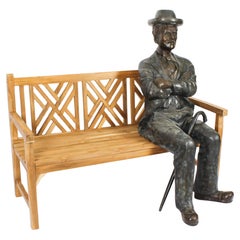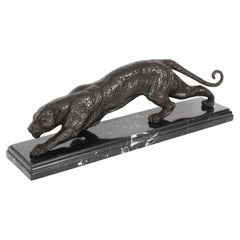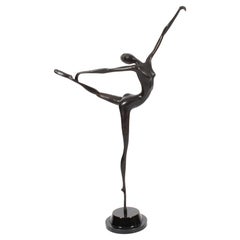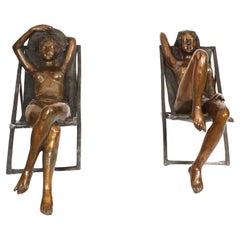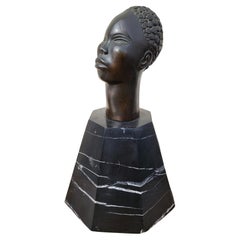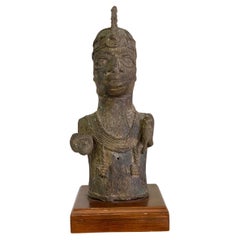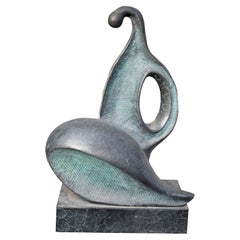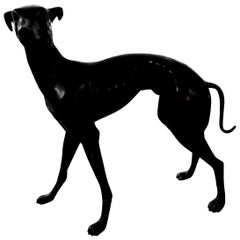Items Similar to Vintage Lifesize Bronze Sculpture William R Hearst Reading on a Bench 20th C
Want more images or videos?
Request additional images or videos from the seller
1 of 13
Vintage Lifesize Bronze Sculpture William R Hearst Reading on a Bench 20th C
About the Item
A truly stunning bronze sculpture of William Randolph Hearst seated on a bench reading a newspaper, dating from the late 20th century.
The bronze is beautifully cast in life size of Hearst reading a newspaper on a teak bench.
The attention to detail is absolutely fantastic and really brings this piece to life.
Add an elegant element to your garden with this lovely sculpture.
Condition:
In excellent condition, please see photos for confirmation of condition.
Dimensions in cm:
Height 127 cm x Width 150 cm x Depth 58 cm
Dimensions in inches:
Height 4 foot, 2 inches x Width 4 foot, 11 inches x Depth 1 foot, 11 inches
William Randolph Hearst (born April 29, 1863,
San Francisco, California, U.S.—died August 14, 1951, Beverly Hills, California) was an American newspaper publisher who built up the nation’s largest newspaper chain and whose methods profoundly influenced American journalism.
Hearst was the only son of George Hearst, a gold-mine owner and U.S. senator from California (1886–91). The young Hearst attended Harvard College for two years before being expelled for antics ranging from sponsoring massive beer parties in Harvard Square to sending chamber pots to his professors (their images were depicted within the bowls). In 1887 he took control of the struggling San Francisco Examiner, which his father had bought in 1880 for political reasons. Hearst remade the paper into a blend of reformist investigative reporting and lurid sensationalism, and within two years it was showing a profit.
He then entered the New York City newspaper market in 1895 by purchasing the theretofore unsuccessful New York Morning Journal. He hired such able writers as Stephen Crane and Julian Hawthorne and raided the New York World for some of Joseph Pulitzer’s best men, notably Richard F. Outcault, who drew the Yellow Kid cartoons. The New York Journal (afterward New York Journal-American) soon attained an unprecedented circulation as a result of its use of many illustrations, colour magazine sections, and glaring headlines; its sensational articles on crime and pseudoscientific topics; its bellicosity in foreign affairs; and its reduced price of one cent. Hearst’s Journal and Pulitzer’s World became involved in a series of fierce circulation wars, and these newspapers’ use of sensationalistic reporting and frenzied promotional schemes brought New York City journalism to a boil. Competition between the two papers, including rival Yellow Kid cartoons, soon gave rise to the term yellow journalism.
The Journal excoriated Great Britain in the Venezuela-British Guiana border dispute (from 1895) and then demanded (1897–98) war between the United States and Spain. Through dishonest and exaggerated reportage, Hearst’s newspapers whipped up public sentiment against Spain so much that they actually helped cause the Spanish-American War of 1898. Hearst supported William Jennings Bryan in the presidential campaign of 1896 and again in 1900, when he assailed Pres. William McKinley as a tool of the trusts (the biggest companies in the United States).
While serving rather inactively in the U.S. House of Representatives (1903–07), Hearst received considerable support for the Democratic presidential nomination in 1904 and, running on an anti-Tammany Hall ticket, came within 3,000 votes of winning the 1905 election for mayor of New York City. In 1906, despite (or perhaps because of) his having turned to Tammany for support, he lost to Charles Evans Hughes in the election for governor of New York, and in 1909 he suffered a worse defeat in the New York City mayoral election. Rebuffed in his political ambitions, Hearst continued to vilify the British Empire, opposed U.S. entry into World War I, and maligned the League of Nations and the World Court.
By 1925 Hearst had established or acquired newspapers in every section of the United States, as well as several magazines. He also published books of fiction and produced motion pictures featuring the actress Marion Davies, his mistress for more than 30 years. In the 1920s he built a grandiose castle on a 240,000-acre (97,000-hectare) ranch in San Simeon, California, and he furnished this residential complex with a vast collection of antiques and art objects that he had bought in Europe. At the peak of his fortune, in 1935, he owned 28 major newspapers and 18 magazines, along with several radio stations, movie companies, and news services. But his vast personal extravagances and the Great Depression of the 1930s soon seriously weakened his financial position, and he had to sell faltering newspapers or consolidate them with stronger units. In 1937 he was forced to begin selling off some of his art collection, and by 1940 he had lost personal control of the vast communications empire that he had built. He lived the last years of his life in virtual seclusion. Hearst’s life was the basis for the movie Citizen Kane (1941).
At the beginning of the 21st century, the family-owned Hearst Corporation was still one of the largest media companies in the United States, with interests in newspapers, magazines, broadcasting, financial and medical services, and cartoon and feature syndicates.
Our reference: A4076
- Dimensions:Height: 50.01 in (127 cm)Width: 59.06 in (150 cm)Depth: 22.84 in (58 cm)
- Materials and Techniques:Bronze,Cast
- Period:
- Date of Manufacture:Late 20th Century
- Condition:
- Seller Location:London, GB
- Reference Number:Seller: A40761stDibs: LU950642156262
About the Seller
5.0
Platinum Seller
Premium sellers with a 4.7+ rating and 24-hour response times
Established in 1983
1stDibs seller since 2012
1,352 sales on 1stDibs
Typical response time: 1 hour
Associations
LAPADA - The Association of Arts & Antiques Dealers
- ShippingRetrieving quote...Shipping from: London, United Kingdom
- Return Policy
Authenticity Guarantee
In the unlikely event there’s an issue with an item’s authenticity, contact us within 1 year for a full refund. DetailsMoney-Back Guarantee
If your item is not as described, is damaged in transit, or does not arrive, contact us within 7 days for a full refund. Details24-Hour Cancellation
You have a 24-hour grace period in which to reconsider your purchase, with no questions asked.Vetted Professional Sellers
Our world-class sellers must adhere to strict standards for service and quality, maintaining the integrity of our listings.Price-Match Guarantee
If you find that a seller listed the same item for a lower price elsewhere, we’ll match it.Trusted Global Delivery
Our best-in-class carrier network provides specialized shipping options worldwide, including custom delivery.More From This Seller
View AllVintage Lifesize Bronze Sculpture of Seated Charlie Chaplin 20th Century
Located in London, GB
A truly stunning bronze sculpture of a seated Charlie Chaplin, dating from the late 20th century.
This remarkable statue is made from solid bronze and features the famous actor seat...
Category
Late 20th Century Figurative Sculptures
Materials
Bronze
Vintage Bronze Panther Sculpture on a Marble Base 20th Century
Located in London, GB
This is a beautifully sculpted panther quietly stalking his prey, cast by the traditional cire perdue process and dating from the second half of the 20th century.
The attention to d...
Category
Mid-20th Century Animal Sculptures
Materials
Marble, Bronze
Vintage Large Abstract Bronze Sculpture of a Dancer 20th C
Located in London, GB
This is a large stunning bronze abstract sculpture of a dancer from the last quarter of the 20th century.
The naked female figure is represented in a dancing pose on a stepped cyl...
Category
1990s Abstract Sculptures
Materials
Bronze
Vintage Large Bronze Sunbathing Ladies Sculptures 20th Century
Located in London, GB
This is a large vintage pair of nude female figures, late 20th century in date.
The sunbathing nudes are made in bronze using the lost wax method and feature the ladies reclining o...
Category
Late 20th Century Figurative Sculptures
Materials
Bronze
Vintage Bronze Polo Player Galloping Horse Sculpture 20th Century
Located in London, GB
This is a handsome bronze sculpture of a polo player on his horse galloping towards the ball at high speed, dating from the last quarter of the 20th century.
Cast by the traditional...
Category
Vintage 1980s English Figurative Sculptures
Materials
Bronze
Vintage Silver Plated Bronze Four Face Buddha Brahma Hindu Sculpture 20th C
Located in London, GB
This is an interesting and very unusual silver plated bronze bust of the famous four-faced Buddha.
This history of this fascinating motif entails a fusion between the Hindu and Buddhist faiths.
This high quality hot cast solid bronze was produced using the traditional "lost wax" process, otherwise known as the "cire perdue" method.
Condition:
In excellent condition, please see photos for confirmation.
Dimensions in cm:
Height 15 x Width 14 x Depth 14 & Weight 2.45 kg
Dimensions in inches:
Height 6 inches x Width 5 inches x Depth 5 inches & Weight 5.4 lbs
The four faced Buddha at the Erawan Shrine, Bangkok is actually Lord Brahma who is one of the Trinity of Hindu Gods.
The other two are Lord Vishnu, the sustainer and Lord Siva the destroyer. Brahma is said to be born from a lotus leaf sprouting from the navel of Vishnu. The Thais call Brahma, Than Tao MahaProm or Phra Phrom.
When Indian scholars spread Buddhism to Thailand, they brought with them Hindu culture and folklore, which has been inextricably linked with Thai culture and beliefs.
Brahma has four faces and eight hands; a feature that could have given rise to the name four faced Buddha. He is the god of creation, mercy and benevolence. He sits atop a lotus leaf; the lotus flower is commonly used for prayers at Thai shrines...
Category
Vintage 1980s Busts
Materials
Silver Plate, Bronze
You May Also Like
Bronze Sculpture, African Head, On Base, 20th Century
Located in MARSEILLE, FR
African head in bronze with black patina, on black and white marble base
Very good quality of carving and patina
Base with some wear and small chips of use
In the style of Riccard...
Category
20th Century French Art Deco Figurative Sculptures
Materials
Marble, Bronze
Mid 20th Century Vintage Bronze Tribal Sculpture
Located in west palm beach, FL
Chic bronze Brutalist tribal sculpture. A depiction of a tribal king. Rough hewn and signs of the hand work. Acquired from a Palm Beach estate
Category
Mid-20th Century American Tribal Figurative Sculptures
Materials
Bronze
$556 Sale Price
20% Off
20th Century Abstract Bronze Sculpture
Located in Bagshot, GB
A fantastic piece of abstract art in the form of a bronze sculpture.
With sharp casting in the form of a shell motif and figurine and with a great verdi gris patina.
Category
Mid-20th Century European Mid-Century Modern Abstract Sculptures
Materials
Bronze
$2,159 Sale Price
20% Off
20th Century Bronze Whippet Sculpture
Located in Houston, TX
20th century Bronze whippet sculpture.
Beautifully executed Hollywood Regency bronze whippet or greyhound statue or figure from the Mid-20t...
Category
20th Century Hollywood Regency Animal Sculptures
Materials
Bronze
Bronze Jug, Bronze Sculpture, Early 20th Century
Located in Roma, IT
Bronze jug is an original objectrealized by anonymous artist in the early 20th Century.
A jug realized in ancient manner, in shape of a female head, with...
Category
Early 20th Century Italian Figurative Sculptures
Materials
Bronze
Lifesize Bronze Female Sculpture of a Nude
Located in London, GB
Lovely Lifesize Bronze of a Female Nude
This Sculpture was Bought from a Residence in Scotland and was in their Garden for Many Years
Lovely Patina
Category
Mid-20th Century Unknown Art Nouveau Figurative Sculptures
Materials
Bronze
Recently Viewed
View AllMore Ways To Browse
William Vintage
Vintage 1920s Bronze
Entry Hall Benches
Entry Hall Bench
Benches For Entry Hall
R Bench
Antique Decorative Bench
Bench Public Furniture
Antique Spanish Bowls
Antique European Bench
20th Century Gold Benches
Decorative Hall Bench
4 Cranes
Marion Hall
Bronze Bench Cast
George Evans
Vintage Mens Chain
Vintage Bronze Benches
